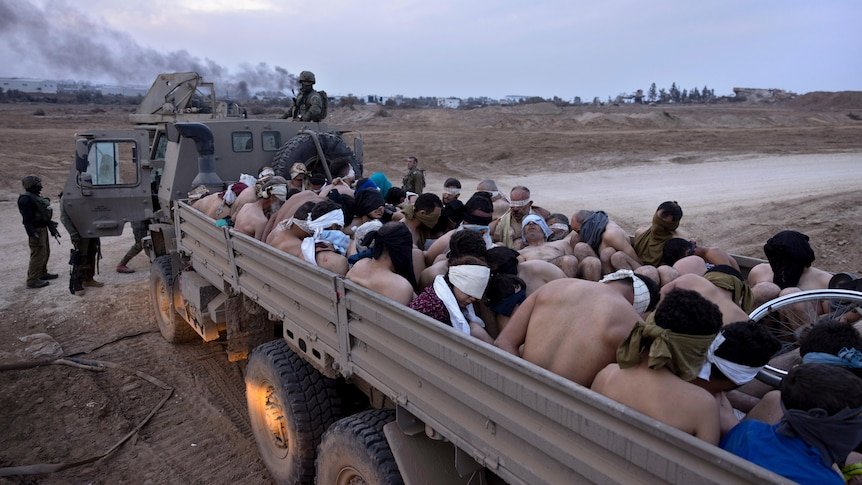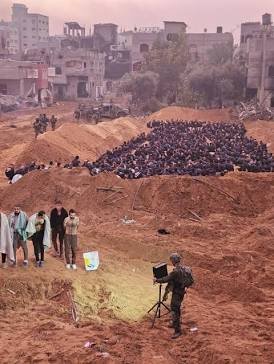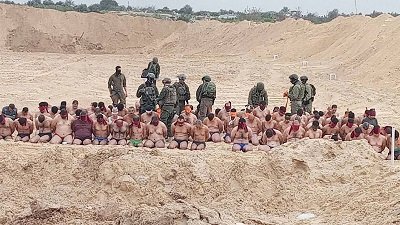For nearly a century, Palestinians have endured violent displacement, military occupation, and settler terrorism. But what’s happening now in Gaza isn’t just another chapter — it’s a breaking point. The death toll has officially passed 56,000, but researchers at Harvard estimate the true number of Palestinian deaths may exceed 311,000.
Children are being shot while waiting for food. Civilians are executed at aid trucks. Families are forced to eat sand. And while Gaza starves, burns, and bleeds, world leaders and media outlets pivot to something else entirely: Iran.
This isn’t a coincidence. It’s a tactic. It’s how genocide stays hidden — under the noise of a bigger, safer war.
A History of Erasure That Led to This
The violence didn’t begin with Hamas. It didn’t begin with October 7. It began with colonization — with forced exile, British-backed land grabs, and ethnic cleansing masked as liberation.
In 1929, under British rule, riots broke out between Arabs and Jews. In just two weeks, 249 people were killed — 133 Jews and 116 Arabs. It was a bloody sign of what was to come. As Britain expanded Jewish immigration to Palestine, tensions turned into institutionalized violence. That violence erupted in 1948 when Israel declared independence — and over 700,000 Palestinians were expelled from their homes. At least 3,000 to 13,000 Palestinians were killed during the Nakba. Their towns were razed, their records destroyed, and their return denied.
From that point forward, the story of Palestine was told by those who erased it.
From Intifadas to Airstrikes — A Pattern of Suppression
In the late 20th century, as Palestinians rose up against occupation, the response from Israel became increasingly militarized. The First Intifada (1987–1993) saw nearly 2,000 Palestinians killed. The Second Intifada (2000–2005) left over 3,300 dead — most of them civilians, many of them children. Meanwhile, Israeli casualties were counted and mourned internationally. Palestinian deaths were treated like background noise.
The bombardments of Gaza became cyclical. In 2008, Israel’s Operation Cast Lead killed over 1,100 Palestinians in just three weeks. In 2014, over 2,100 were killed again. In 2021, during an 11-day assault, nearly 300 more Palestinians were killed — dozens of them children. Ceasefires came and went, but the core system — apartheid, blockade, occupation — stayed firmly in place.
Then came October 7, 2023.
The Genocide of Gaza
Hamas’s attack on October 7 killed around 1,200 Israelis. The response from Israel was not a targeted campaign — it was a full-scale erasure of Gaza. As of June 2025, over 56,000 Palestinians have been killed, including at least 14,500 children. But a Harvard study released quietly in early May suggested the real number is closer to 311,000 — including those buried under rubble, lost to disease and dehydration, or never recovered at all.
That’s nearly 1 in every 7 Gazans.
But it didn’t stop at bombings. Aid convoys became war zones. Food lines became execution sites.
On May 27, the Gaza Humanitarian Foundation began aid distribution under Israeli oversight. Since then, more than 450 civilians have been killed trying to access food. In one day alone — June 17 — Israeli tanks shelled a crowd near Khan Younis, killing 59 and injuring over 200. The following days saw dozens more killed in Nuseirat and Rafah, many while clutching empty containers or walking with white flags.
This isn’t just a military campaign. It’s a hunger war. It’s death by siege, by starvation, by bullets at food lines. The UN, Oxfam, and Human Rights Watch have all raised the same alarm: Gaza’s death toll is the highest of any conflict in the 21st century — and most of the dead are civilians.
The Smokescreen: Iran
Just as the world began paying attention to mass graves, to starving families and body bags stacked in UN schools, headlines began to shift. Suddenly, the focus wasn’t Gaza. It was Iran.
Iran launched missiles — in retaliation for Israel bombing its embassy in Damascus. Israel responded. The U.S. mobilized forces. Trump started talking about regime change. And just like that, the narrative shifted.
But this is no coincidence. Every time Israeli war crimes dominate the news cycle, a new enemy emerges: Hezbollah. Syria. The Houthis. And now, Iran. The tactic is always the same — use fear to change the conversation.
Gaza hasn’t stopped bleeding. But the cameras have moved on.
Murder by More Than Just Missiles
What makes this genocide so insidious is that it’s not just carried out by the military. It’s carried out by settlers with torches. By civilians with phones. By institutions that criminalize survival.
Across the West Bank, Israeli settlers have carried out a campaign of terror dubbed “price tag” — where they attack Palestinian homes, burn olive groves, poison water wells, and shoot at civilians with complete impunity. In some cases, they do it alongside soldiers. In others, soldiers simply stand by and watch.
These aren’t isolated incidents. Since October 2023, settler violence has skyrocketed. A leaked UN map shows over 1,800 attacks in just eight months. In hotspots like Nablus, Hebron, and Ramallah, Palestinian families are being driven off their land by mobs with government protection.
This is state-enabled terrorism. And it doesn’t stop in the fields.
It has come to this: Palestinians are now eating sand to survive.
In northern Gaza, where famine has already taken hold, eyewitnesses and humanitarian groups have reported families mixing sand with water to create paste just to silence the pain in their stomachs. Children chew on animal feed, tree bark, cardboard, or grass when they can find it. But even that is running out.
There’s no sugar coating this — Gaza is starving, and it is being starved deliberately.
When flour does arrive — smuggled in or dropped from convoys — chaos erupts. Crowds of thousands crush inward, and in the desperation, people have trampled each other, fought each other, and even been killed by Israeli gunfire while reaching for it. Aid trucks are looted not out of greed, but raw starvation. One witness described it simply: “We don’t fight for food. We fight not to die.”
In March 2024, Gaza’s child malnutrition rate surpassed that of Yemen, South Sudan, and Somalia. The UN says the crisis is “unlike anything we’ve seen this century.” And yet this isn’t a drought. It’s not an accident. It’s policy — the weaponization of hunger.
This is what collective punishment looks like: where getting a bag of flour means risking death, and the only meal you’re guaranteed is a handful of dirt.
The Culture of Mockery — Telegram, TikTok, and the Death Spectacle
In one of the most horrifying revelations to date, a Telegram channel followed by over 120,000 Israelis was found sharing photos of dead Palestinian children, laughing at famine, and celebrating airstrikes as though they were fireworks. Some of the posts called Palestinians “roaches” and “rats.” Others joked about rape and starvation.
This is not just fringe hate. It’s dehumanization at scale. It’s genocidal ideology, broadcast in emojis and memes.
Even some IDF-affiliated accounts participated — using terms like “cleaning out the trash” and “final solutions.” On TikTok, Israeli influencers have filmed themselves mocking air raids and dancing in front of demolished Palestinian homes.
This is what happens when genocide becomes normalized: the dead become content.
Holocaust Gaslighting: Weaponizing History to Justify Genocide
Let’s make something crystal clear: using the Holocaust to justify a genocide is not remembrance — it’s desecration.
Israeli settlers and government officials have repeatedly invoked the Holocaust to shield their violence. They claim Gaza is a threat like 1930s Germany. They call Palestinian resistance “Nazism.” They slap the label “antisemite” on anyone who dares to question their actions — Jewish or not. And when the numbers don’t lie? When the mass graves are photographed, when the bodies are too many to deny? They call it propaganda.
It’s psychological warfare. It’s gaslighting.
They take one of history’s greatest atrocities — the systematic murder of six million Jews — and wield it like a sword to defend the murder of tens of thousands of Palestinians. It’s not just immoral. It’s deeply insulting to the victims of the Holocaust, many of whom swore “never again” wouldn’t mean just for them — but for all people.
Here’s the twisted logic they want you to swallow:
If you mourn a Gazan child, you’re antisemitic.
If you post a death toll, you’re “spreading Hamas propaganda.”
If you show a starving family, you’re “manipulated by the media.”
And if you say, this looks like genocide, they say: How dare you compare anything to the Holocaust.
But they compare Palestinians to Nazis every damn day.
This isn’t about protecting memory. It’s about abusing it. It’s about weaponizing trauma to shut down truth.
You don’t honor Holocaust victims by using their legacy to justify a new genocide. You spit on it.
The U.S. Media Loves to Ask if Israel Has a Right to Exist — But Never Asks if Palestine Has a Right to Live
Turn on any major news channel in the United States, and you’ll hear the same nauseating question on repeat:
“Does Israel have a right to defend itself?”
“Do you recognize Israel’s right to exist?”
“Do you condemn Hamas?”
What you won’t hear is this:
“Do Palestinians have a right to life?”
“Should starving children be bombed for existing?”
“Does Palestine have a right to defend itself?”
The media doesn’t ask because the answer makes them uncomfortable. Because if they admit that Palestinians are human — if they admit this is not a war, but genocide — the entire American political machine starts to fall apart.
Instead, the press worships at the altar of bipartisan war hawks. They platform Democratic and Republican officials alike — all parroting the same lines about Israel’s “right to statehood,” while refusing to say the word Palestine unless it’s followed by “terrorist.”
It’s disgusting. It’s intentional. It’s propaganda.
Here’s what they don’t want you to say out loud:
This is not a war. Because in war, both sides have weapons. In Gaza, only one side has bombs. Only one side has tanks. Only one side has an air force. Only one side controls the water, the borders, the airspace, and the food.
Palestinians are being obliterated — and the U.S. press corps is busy asking how many more bombs Israel needs.
Free Israel”? From What — Consequences?
There’s a phrase you’ve probably seen thrown around on signs and social media: “Free Israel.”
Free it from what, exactly? From accountability? From international law? From the consequences of slaughtering an entire population under blockade?
Israel is not under siege. Israel is the siege. It controls the air, the land, the borders, the sea. It has the weapons, the surveillance systems, the funding, the nukes, and a blank check from the U.S. Congress.
When people say “Free Israel,” what they really mean is: Let Israel do whatever the hell it wants to Palestinians — without pushback, without questions, and without limits.
It’s an upside-down slogan — the verbal equivalent of bootlicking for a colonizer. Meanwhile, the people actually trapped, starved, bombed, executed at bread lines, and reduced to eating sand? They’re told they’re terrorists for simply wanting to breathe.
No one’s calling to “Free Palestine” from justice. They’re calling to free it from occupation, apartheid, ethnic cleansing, and decades of unpunished war crimes.
So no — “Free Israel” isn’t a freedom chant. It’s a fascist dog whistle. And everyone yelling it while Gaza burns is on the wrong side of history.
So Let’s Be Clear
This is not a war between equals. This is not “both sides.” This is not defense. This is not complicated.
This is the deliberate, systematic killing, displacement, starvation, and dehumanization of an entire people — with government policy, civilian complicity, and global silence. And it is happening in real time.
If you’re more outraged by Iran’s missile program than by a child shot at a food truck, your moral compass is broken.
What’s happening in Gaza is genocide. Not just in bombs. But in policies. In silence. In celebration of death. And now, in distraction.
Don’t let the headlines bury the truth. Gaza is the story. And every day you look away, another life is lost.
06/25/25


Translation: “Terrorists from another angle”
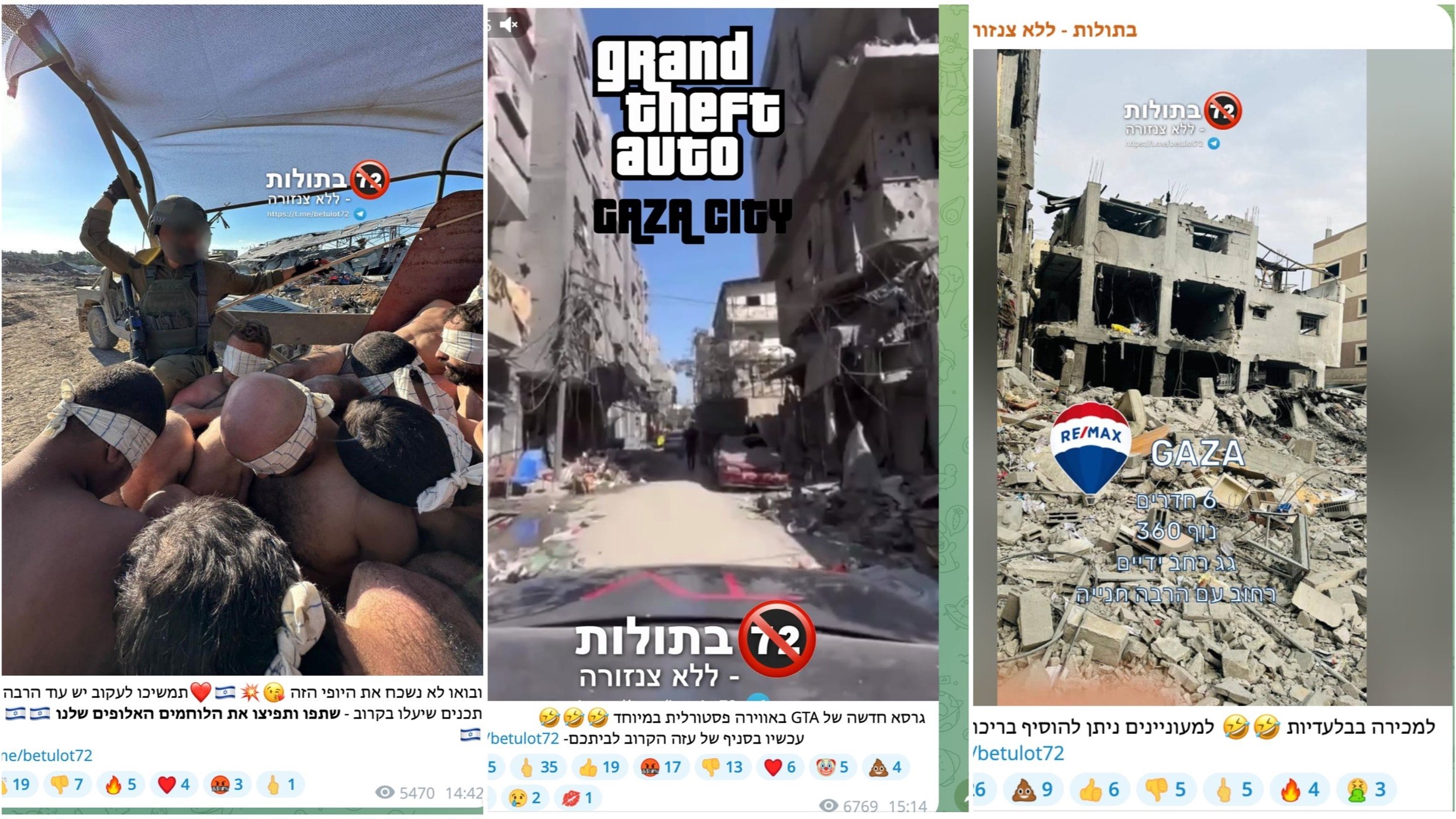
Translation: “A new version of GTA with an especially pastoral vibe 🤣🤣 Now at the Gaza entrance nearest to your home.”
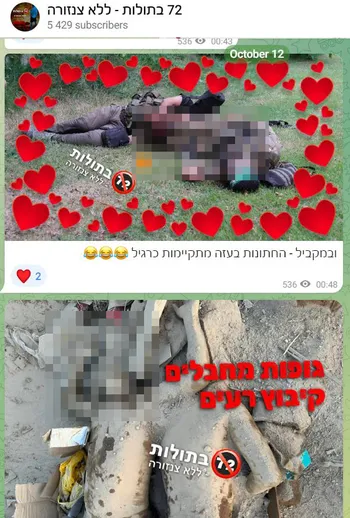
• Text on image Translation: “Virgins ❌ Uncensored” • Caption under the video Translation: “Meanwhile – the girls in Gaza are smiling as usual 😂😂😂”
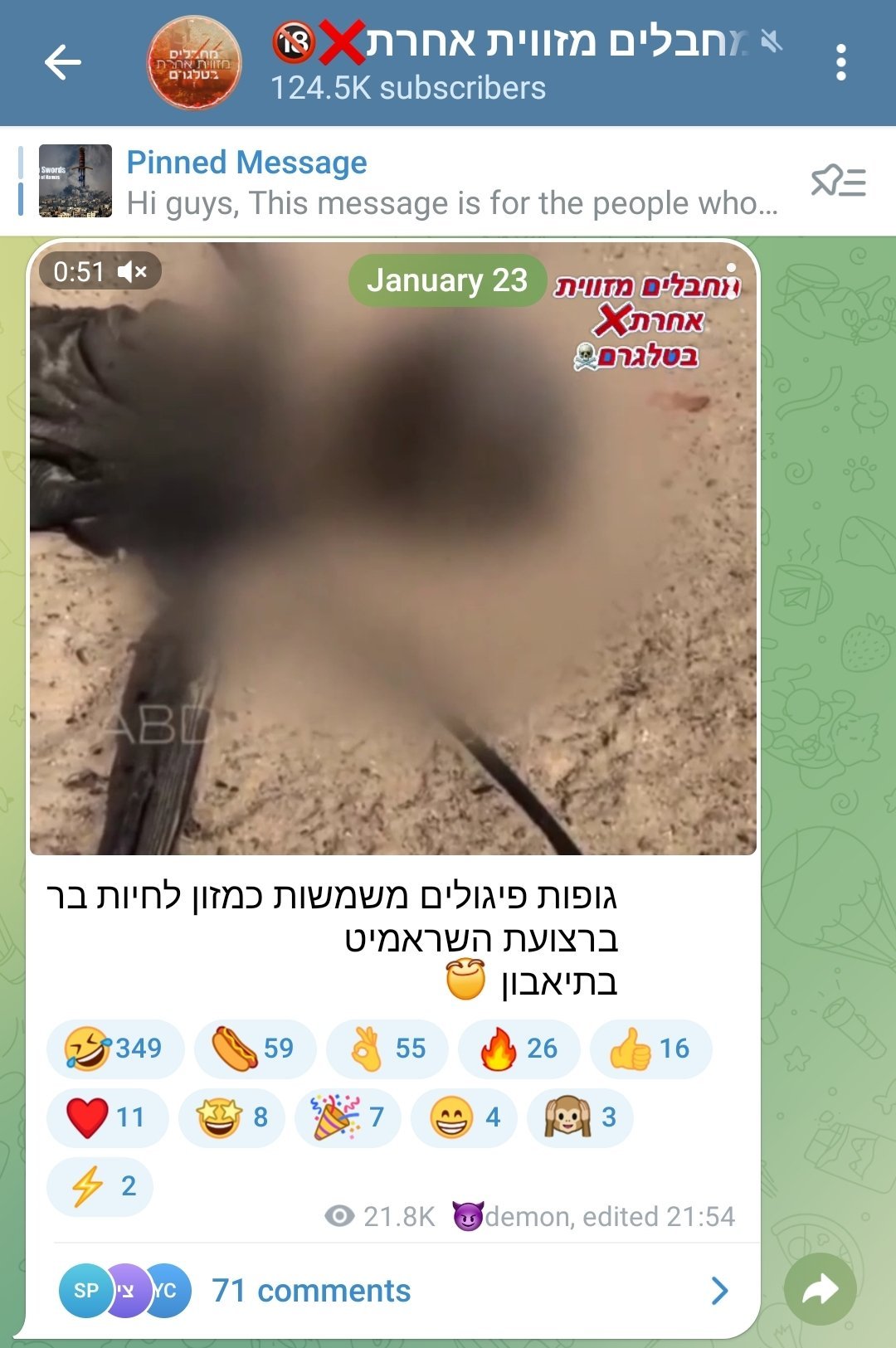
The Hebrew text in the image translates to: “Bodies of terrorists serve as food for wild animals in the Israeli desert in the south.”
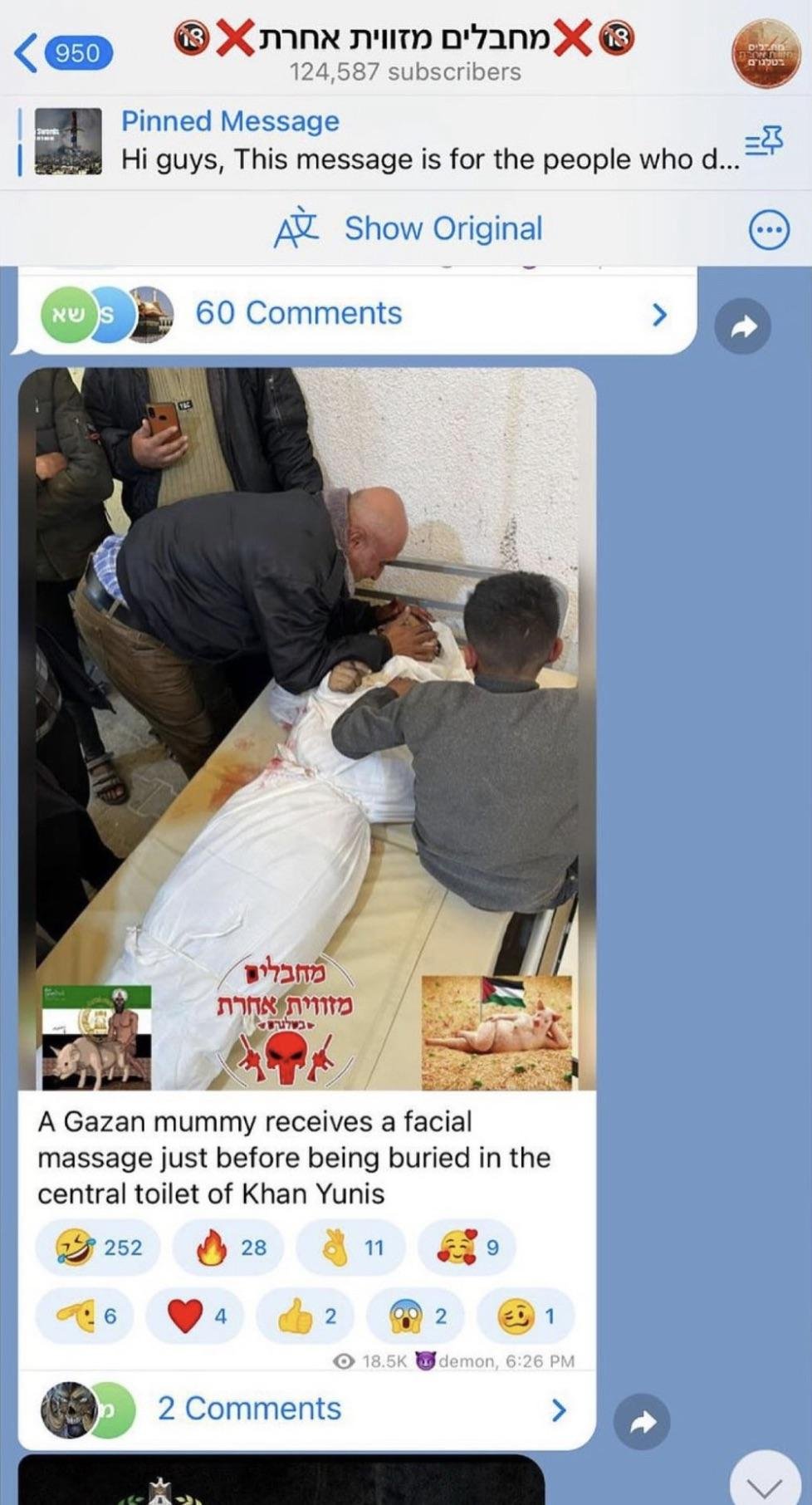
Translation: “Terrorists from another angle”

Translation: “Terrorists from another angle”
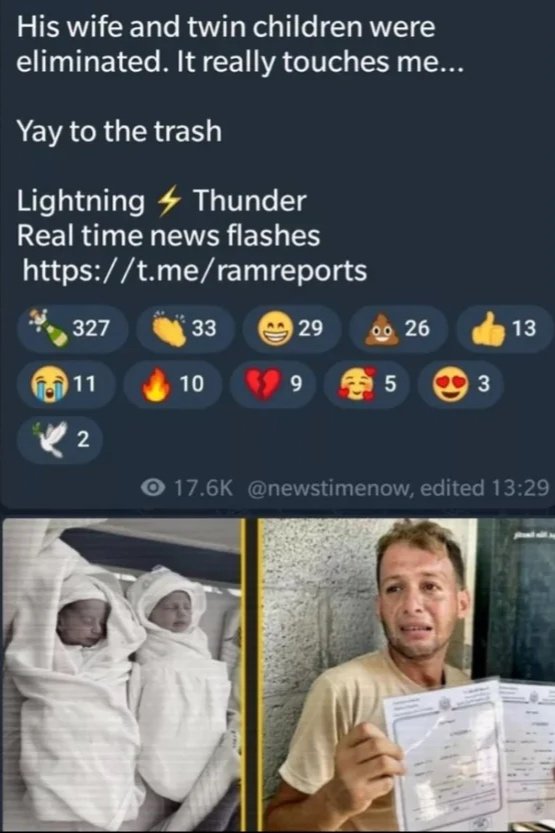
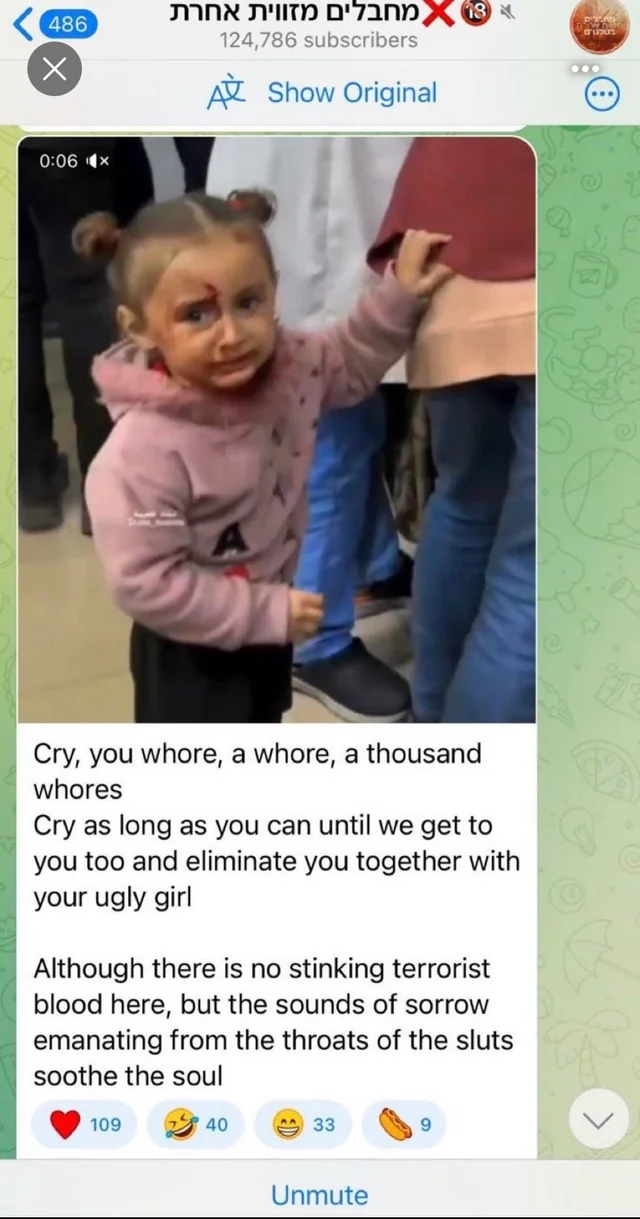
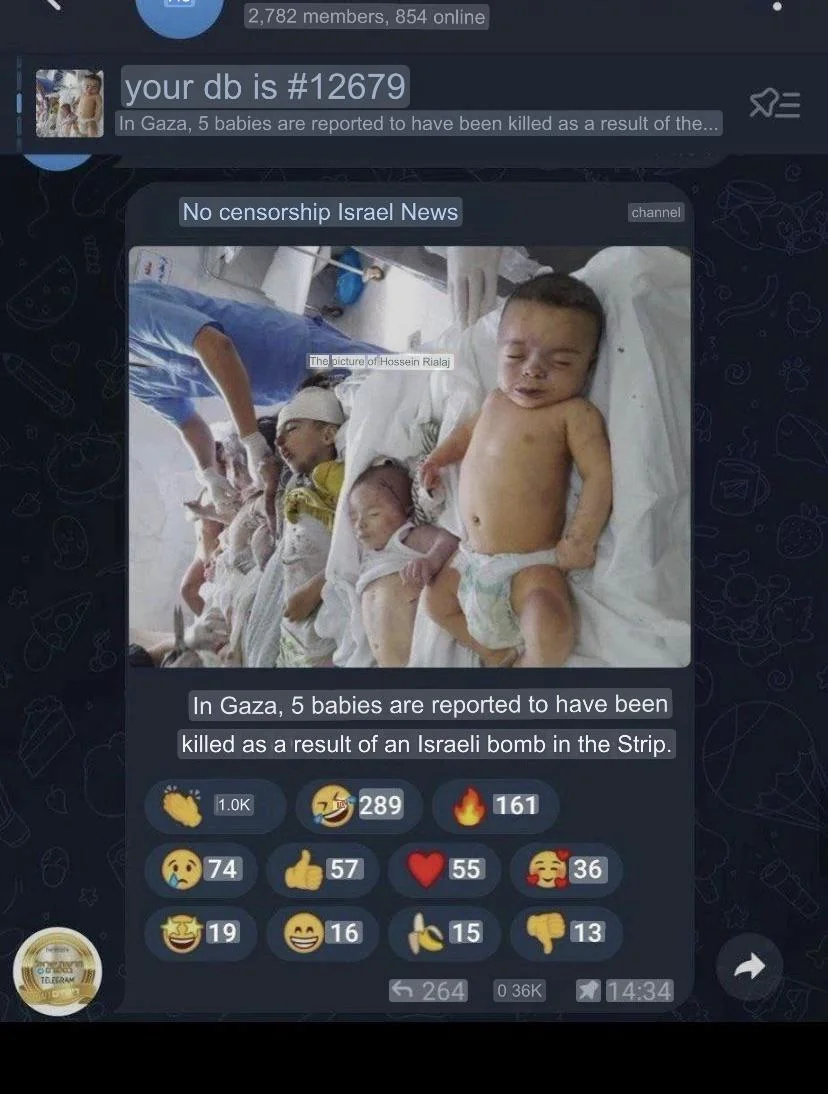
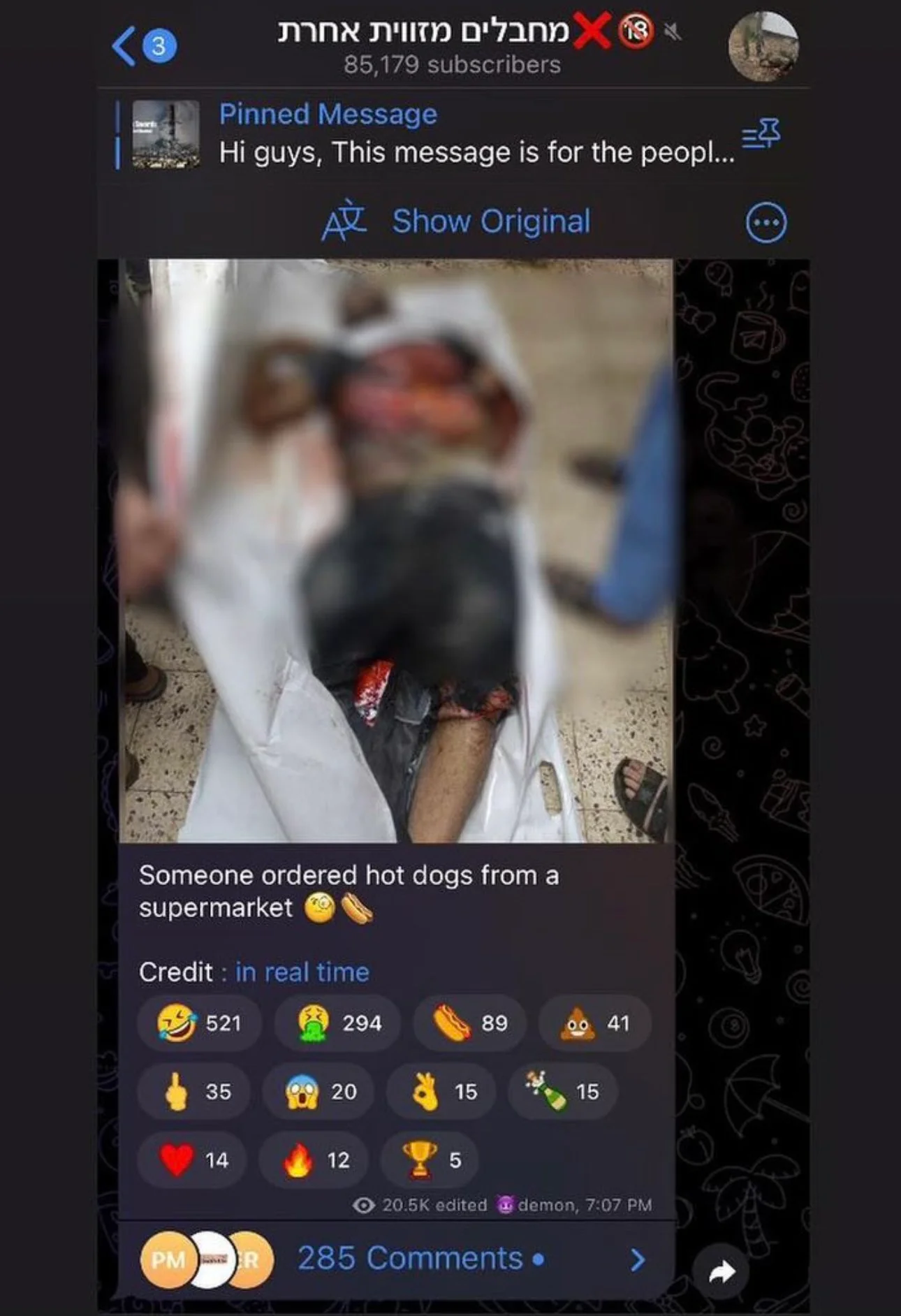
![Translation:
“It’s good you’re starting to love this!!!
This is what a Nazi from the Israeli Strip looks like
after being recognized with an intimate encounter
with a tank shell!
If this doesn’t illustrate it clearly enough—[text censored]
Credit: K](https://images.squarespace-cdn.com/content/v1/683fd090421e767b14f65099/d452b878-cf9c-4b30-acad-0241e199cf2d/IMG_5450.jpeg)
Translation: “It’s good you’re starting to love this!!! This is what a Nazi from the Israeli Strip looks like after being recognized with an intimate encounter with a tank shell! If this doesn’t illustrate it clearly enough—[text censored] Credit: Kobi the Thousand”
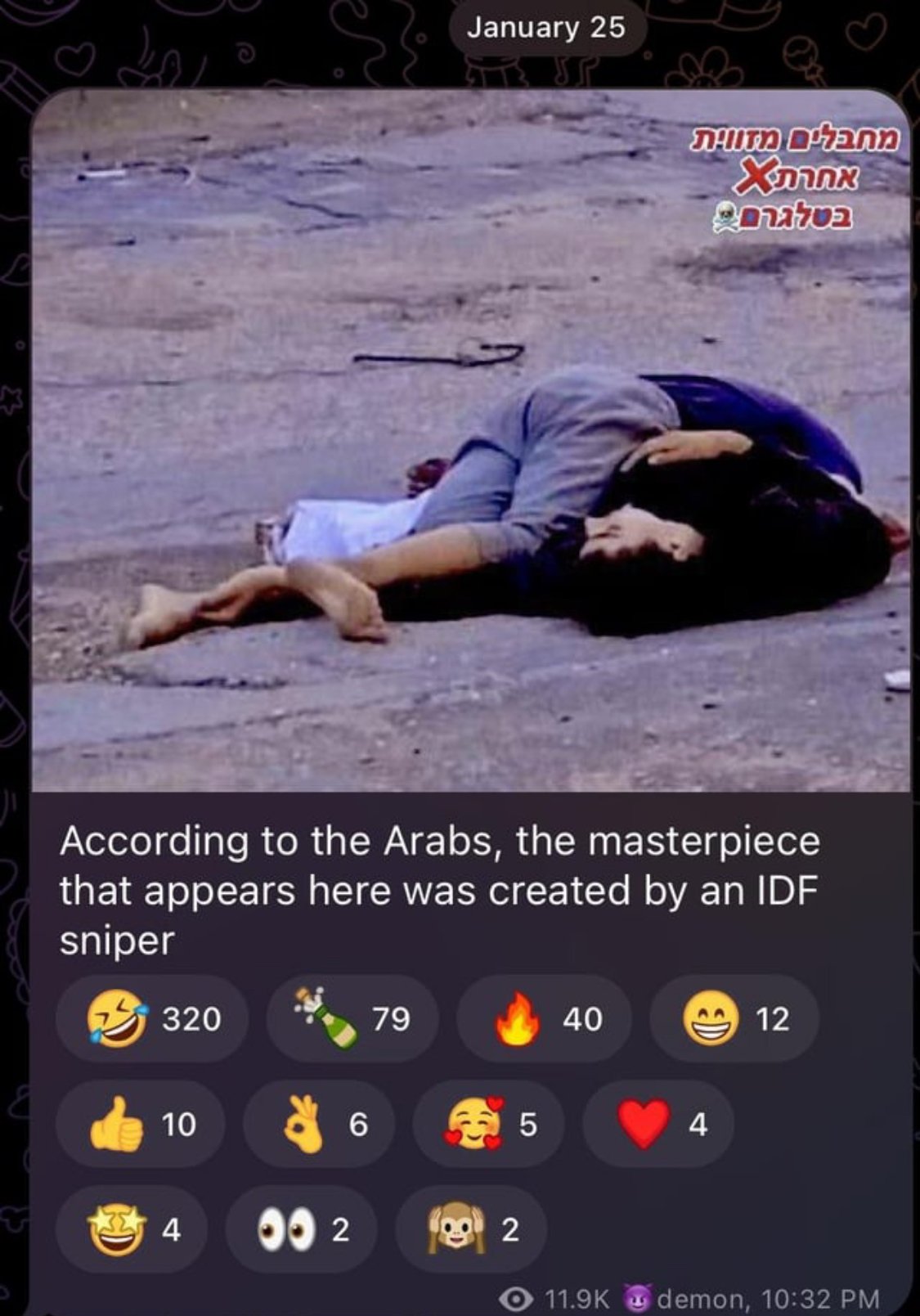
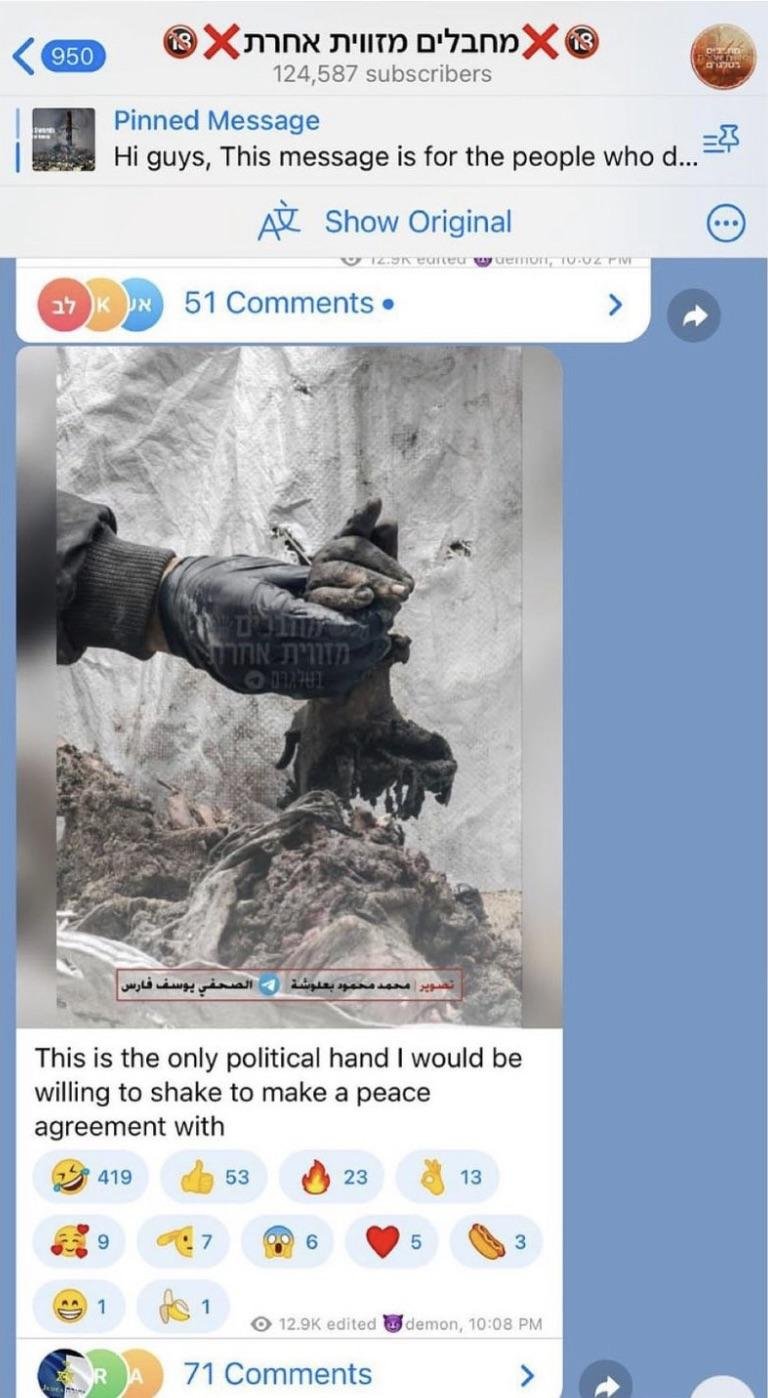
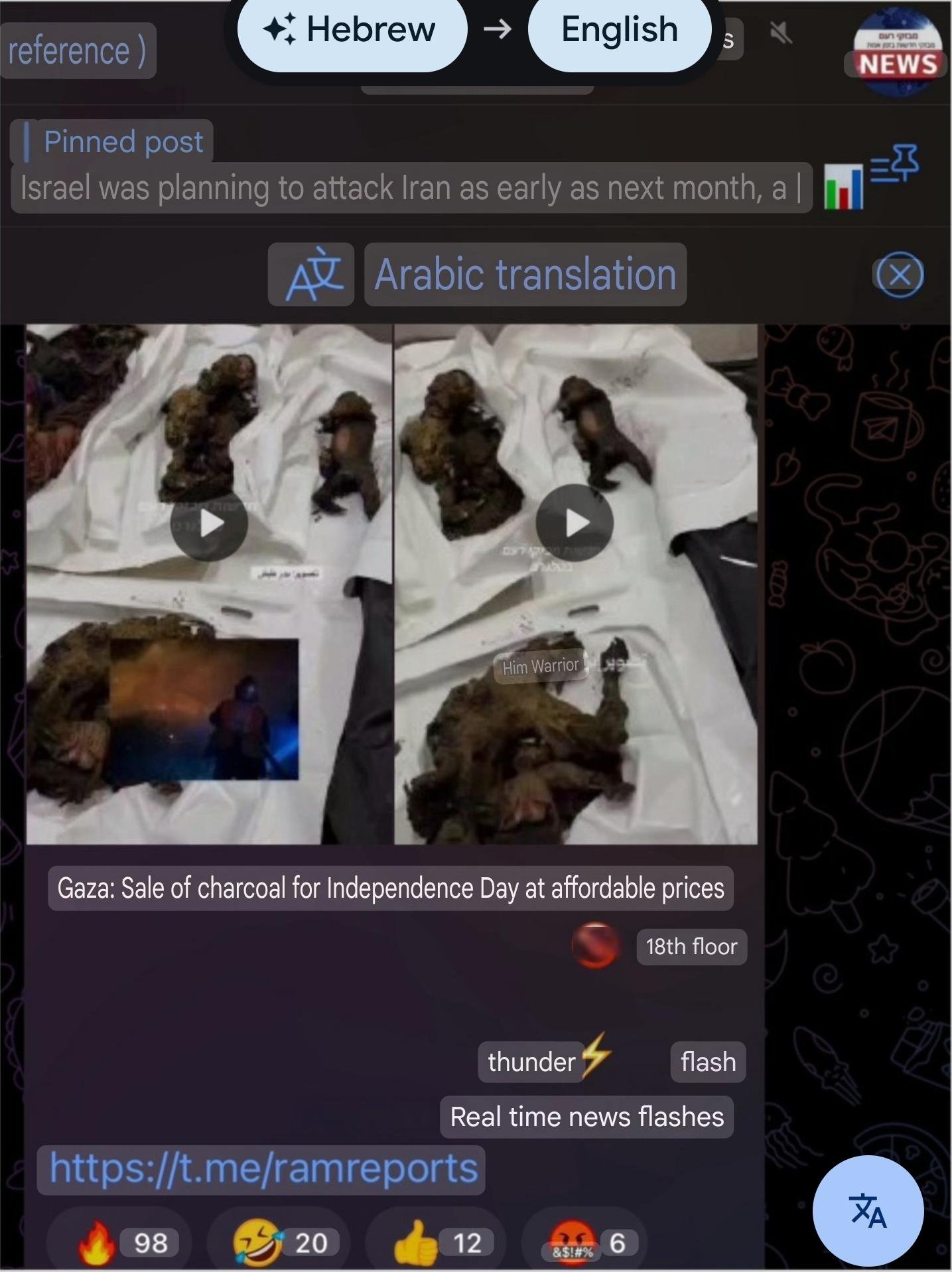
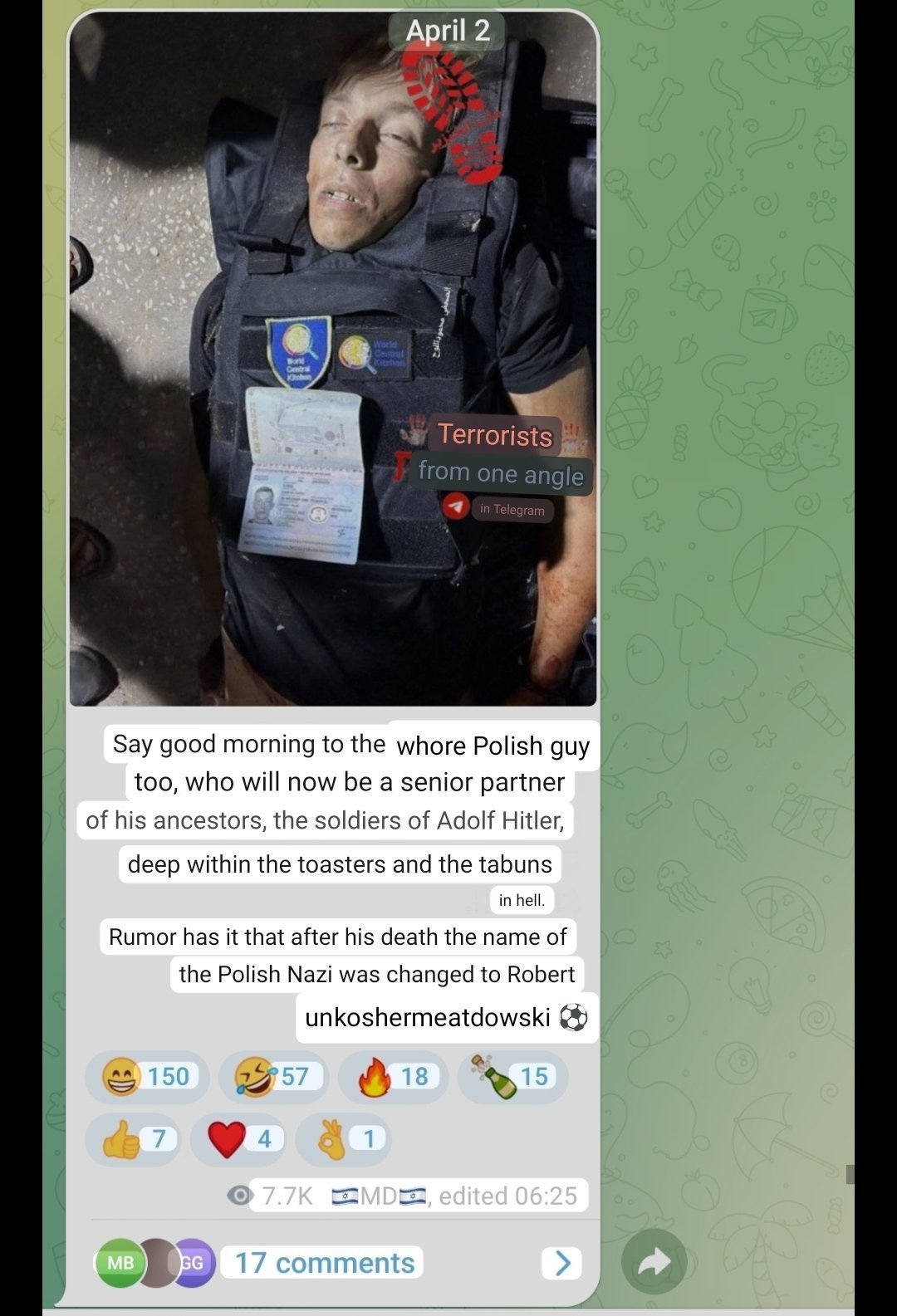
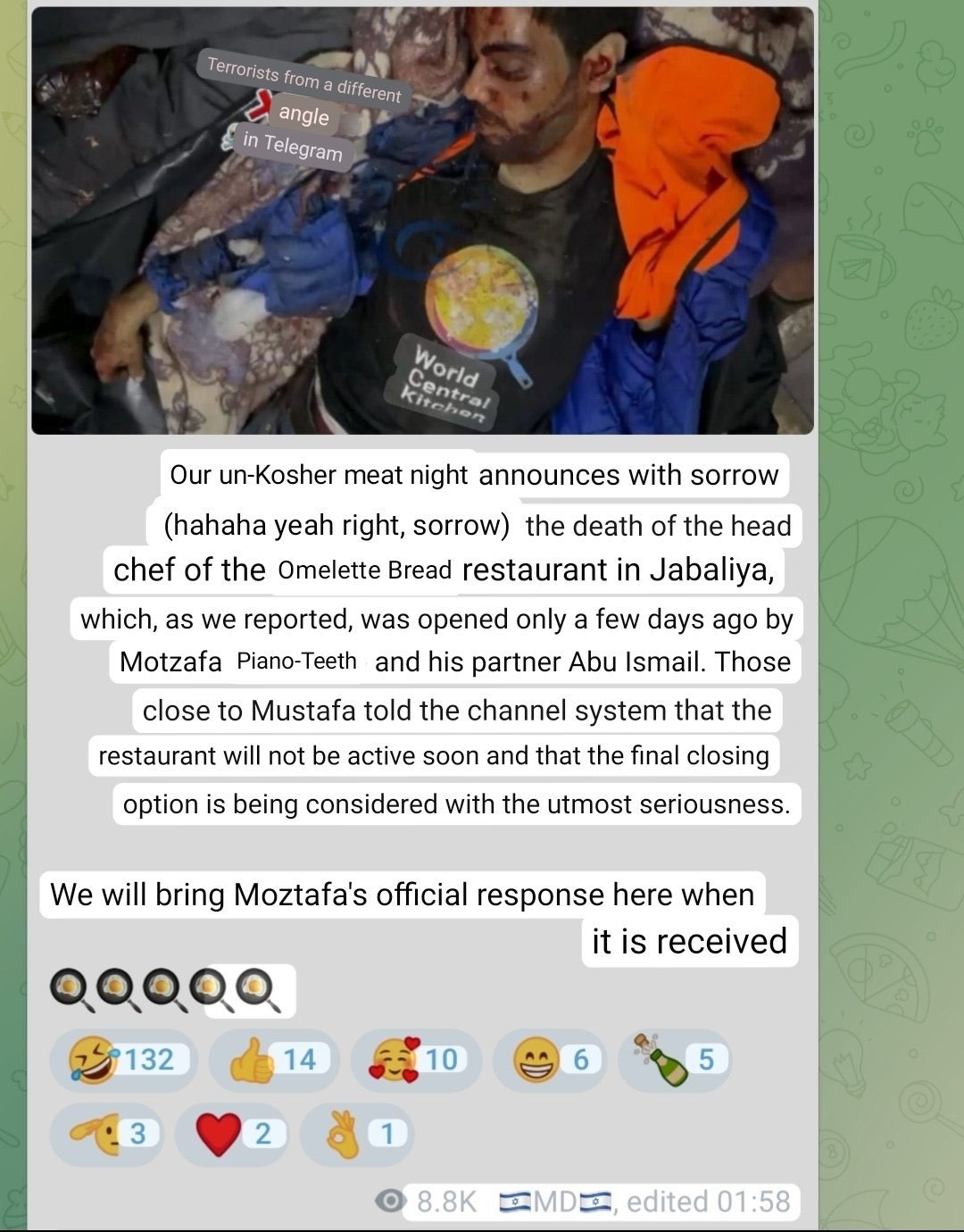
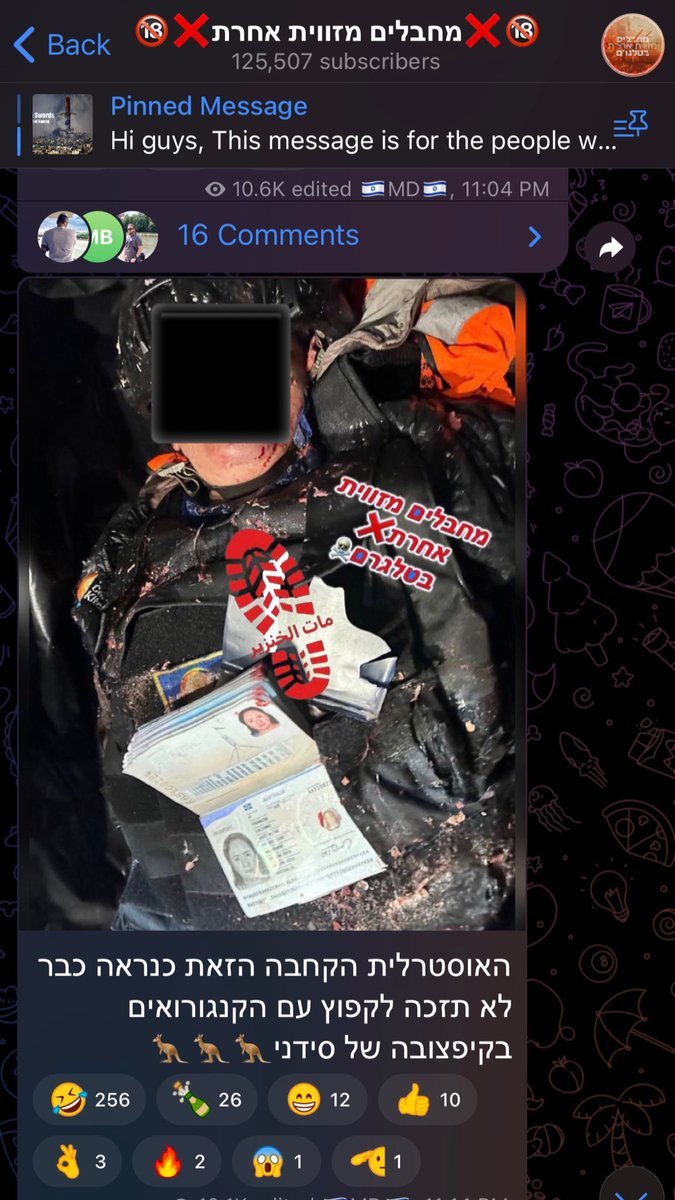
Translation: “This old Australian cow apparently won’t get to jump with kangaroos at the Sydney Opera House anymore 🦘🦘🦘” Arabic text on the bootprint overlay: مات الخنزير = “The pig is dead”
